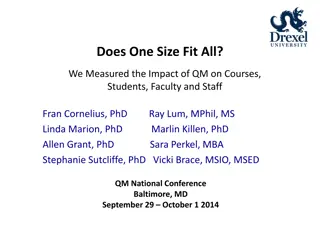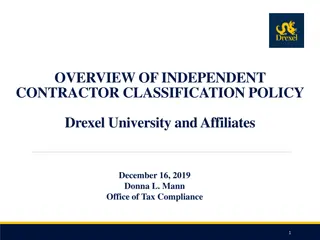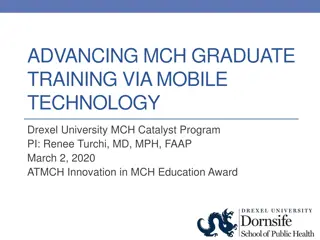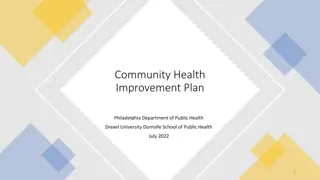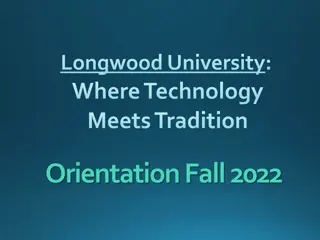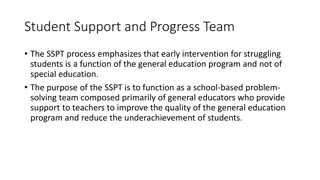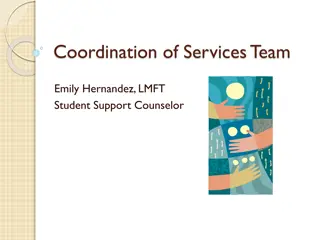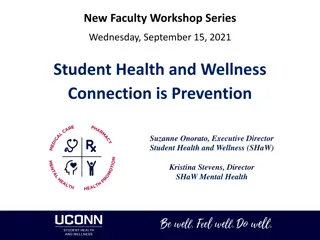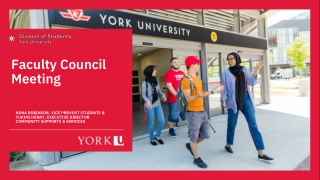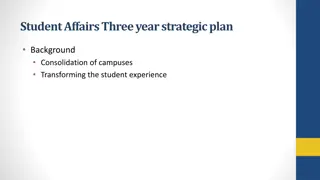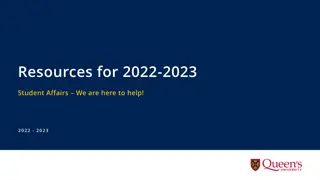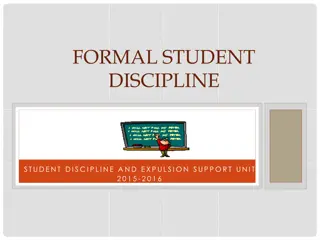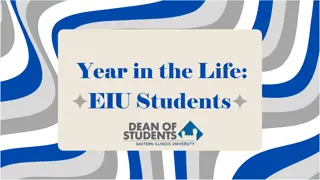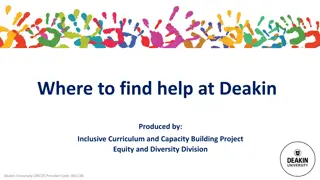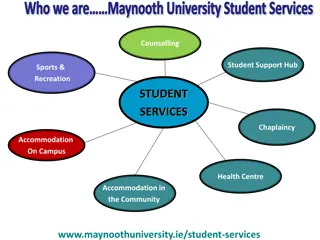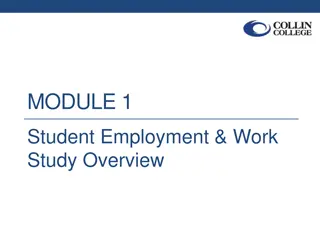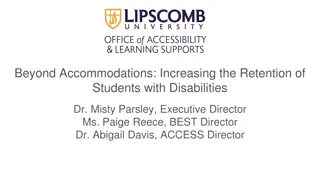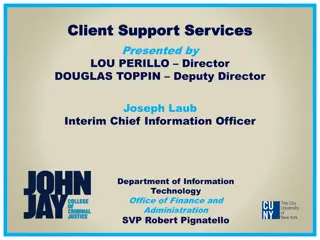Enhancing Online Student Support Services at Drexel University
"Drexel University's Dornsife School of Public Health focuses on reimagining support services for online student success. The initiative includes student development theory, recommendations for virtual services, and strategies to modify existing services for online learners. Demographic data, such as age range, location, and student diversity, is also analyzed to improve support efforts. The SWOT analysis highlights strengths, weaknesses, opportunities, and threats in the current online support services structure."
Download Presentation

Please find below an Image/Link to download the presentation.
The content on the website is provided AS IS for your information and personal use only. It may not be sold, licensed, or shared on other websites without obtaining consent from the author. Download presentation by click this link. If you encounter any issues during the download, it is possible that the publisher has removed the file from their server.
E N D
Presentation Transcript
REIMAGINING SUPPORT SERVICES FOR ONLINE STUDENT SUCCESS MELISSA KAUFMAN & MICHELLE QUIGLEY DREXEL UNIVERSITY DORNSIFE SCHOOL OF PUBLIC HEALTH
AGENDA Student Development Theory Recommendat ions Overview Goals Services Results
LEARNING OBJECTIVES 1 2 3 Review obstacles in developing virtual services Analyze strategic approach to deliver services Design plan to modify current services and adapt to serving online students
DORNSIFE & DREXEL Large, private, non-profit 24,000 DU students,2700 DUO 269 Incoming DSPH students, First Dornsife online master's degrees 92 confirmed students Masters students
45% 42% 39% 40% 36% 34% 35% 33% 30% 25% 22% 20% 14% 15% 12% 11% 11% 10% 10% 8% 7% 6% 4% 3% 5% 2% 2% 2% 1% 1% 0% 20-24 25-29 30-34 35-39 40-44 45-49 50+ Total Population Face-to-Face Online AGE RANGE
100% 90% 42% 28% 30% 80% 70% 60% LOCATION 50% 50% 27% 24% 40% 30% 20% 28% 28% 44% 10% 0% PA Region (DE, MD, NY, NJ) Other Total Population Face-to-Face Online
4% Unknown 4% 4% 47% White 46% 46% 1% Native Hawaiian or Other Pacific Islander 0% 0% RACE 4% Hisp or Latino 9% 7% 29% Black or African American 28% 28% 14% Asian 12% 13% 2% American Indian or Alaska Native 1% 1% 0% 5% 10% 15% 20% 25% 30% 35% 40% 45% 50% Online Students Face-to-Face Total Population
Online Students INTERNATIONAL STUDENTS Face-to-Face Total Population 86% 88% 90% 92% 94% 96% 98% 100% 102% Domestic International
SWOT: ONLINE SUPPORT SERVICES STRENGTHS WEAKNESSES OPPORTUNITIES THREATS Existing relationships DUO/IT Pilot Online Orientation (2019) Timeline Centralized services Campus partner collaboration EMPH Faculty/staff support 1stcohort Part time program
STUDENT DEVELOPMENT THEORY Strange and Banning s (2001) Personal Environment Theory Security and Inclusion; Involvement; Community Involvement = investment and effort Astin s (1984) Theory of Involvement Sense of belonging, connectivity Be intentional with opportunities; high involvement ~ high persistence Tinto s (1993) Theory of Student Departure Academic difficulties; inability to resolve educational/occupational goals; failure to integrate socially/intellectually Intentional opportunities, informal student and faculty/student interactions
Connect with University, School, and public health communities SUMMER/FALL GOALS Provide academic, career, and wellness support and resources Provide technical support to aid transition to online learning
Virtual Orientation 8 weeks (August mid-September) Asynchronous modules and synchronous sessions SUMMER SERVICES OVERVIEW Weekly themes Orientation Leaders weekly challenges Annual Pinning Ceremony Synchronous meeting, student names are announced Summer Reading Just Mercy by Bryan Stevenson Synchronous Book Club Communication platforms
Communication platforms DASH Instagram MS Teams/Zoom FALL SERVICES OVERVIEW Events: Professional Development Seminar Coffee and Convos Virtual lounge Town halls, student organization meetings Advising hours
RESULTS Attending Virtual Orientation 100.0% 88.5% 88.5% 88.5% 88.5% 90.0% 81.0% 80.0% 70.0% 60.0% 50.0% 50.0% 40.0% 31.0% 30.0% 19.0% 20.0% 15.5% 15.5% 11.5% 11.5% 8.0% 10.0% 4.0% 0.0% 0.0% 0.0% 0.0% 0.0% Welcomed Prepared Excited Connect with Peers Approach F/S Technology Agree Neither Agree nor Disagree Disagree
RESULTS Virtual Orientation Overall 80.0% 76.0% 68.0% 68.0% 70.0% 65.5% 64.0% 60.0% 56.0% 50.0% 44.0% 40.0% 28.0% 27.0% 30.0% 20.0% 16.0% 16.0% 12.0% 8.0% 8.0% 10.0% 4.0% 4.0% 4.0% 2.0% 2.0% 0.0% 0.0% 0.0% Theme Organization Session Organization Academic Questions Campus Life Questions Responsive Presenter Responsive OL Insightful OL Agree Neither Agree nor Disagree Disagree
Combination of synchronous and asynchronous Content was impactful and detailed Recordings Successfully aided transition RESULTS Duration overall Utilizing multiple platforms Meet and greet opportunities
RECOMMENDATIONS Identify Identify your communities needs Ask Prepare Be prepared with information and resources Don t assume ask!
ACTIVITY STRENGTHS WEAKNESSES OPPORTUNITIES THREATS
QUESTIONS? THANK YOU! SHARE YOUR FEEDBACK! MELISSA KAUFMAN DIRECTOR OF ACADEMIC INNOVATION MJK397@DREXEL.EDU MICHELLE QUIGLEY ASSOCIATE DIRECTOR, STUDENT AND ALUMNI SERVICES MCM458@DREXEL.EDU
1 2 3 4 Astin, A. W. (1984). Student involvement: A developmental theory for higher education. Journal of College Student Personnel, 25(4), 297 308. Evans, N. J., Forney, D. S. & Guido-DiBrito, F (1998). Student Development in College. San Francisco: JosseyBass. Strange, C. C. & Banning, J. H. (2001). Educating by Design. San Francisco: JosseyBass. Tinto, V. (1987) Leaving college: Rethinking the causes and cures of student attrition. Chicago; University of Chicago Press. REFERENCES


